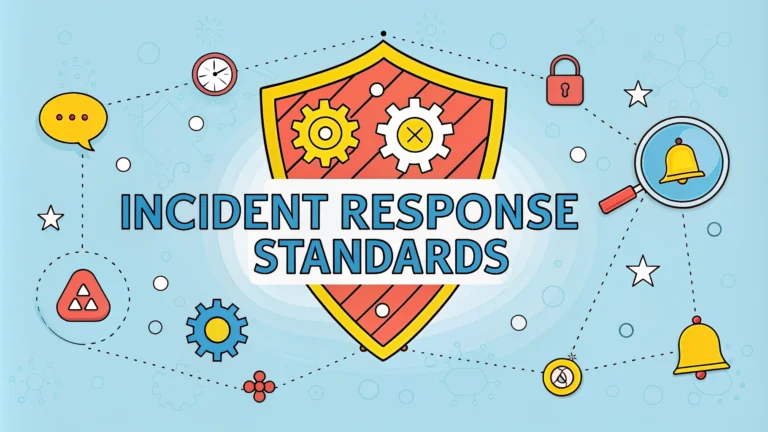Penetration testing plays a key role in modern incident response standards by proactively identifying security weaknesses before malicious actors can exploit them.
An effective incident response framework must incorporate regular penetration testing to validate security controls and ensure organizational readiness for potential cyber attacks.
This guide explores the essential components of integrating penetration testing into incident response procedures and provides actionable steps for implementation.
Core Components of Penetration Testing in IR
- Vulnerability Assessment
- Exploitation Testing
- Post-Exploitation Analysis
- Reporting and Documentation
- Remediation Planning
Planning Your Testing Schedule
Schedule penetration tests at regular intervals – quarterly for critical systems and annually for lower-risk assets.
| System Type | Testing Frequency |
|---|---|
| Critical Infrastructure | Quarterly |
| Customer-Facing Applications | Bi-annually |
| Internal Systems | Annually |
Testing Methodologies
- Black Box Testing: Simulates external attacker perspective
- White Box Testing: Complete system knowledge provided
- Gray Box Testing: Limited system information available
Integration with IR Procedures
Document all findings in your incident response playbooks and update response procedures based on test results.
Create specific response scenarios for vulnerabilities identified during penetration testing.
Establish clear communication channels between penetration testers and incident response teams.
Essential Tools and Resources
- Kali Linux – https://www.kali.org/
- Metasploit Framework
- Burp Suite
- Nmap
- Wireshark
Documentation Requirements
Maintain detailed records of all penetration testing activities, including:
- Test scope and objectives
- Methodologies used
- Vulnerabilities discovered
- Exploitation attempts
- Remediation recommendations
Legal and Compliance Considerations
Obtain written authorization before conducting any penetration testing activities.
Ensure compliance with relevant regulations such as GDPR, HIPAA, or PCI-DSS.
Document all testing activities to demonstrate due diligence in security testing efforts.
Moving Forward with Your IR Program
Review and update your penetration testing procedures quarterly to align with emerging threats and organizational changes.
Contact organizations like SANS Institute (www.sans.org) or OWASP (www.owasp.org) for additional guidance and resources.
Consider certification programs like CEH or OSCP to build internal penetration testing capabilities.
Best Practices for Test Execution
- Establish clear testing boundaries and scope
- Create detailed test plans before execution
- Monitor system performance during testing
- Document all actions and findings in real-time
- Maintain secure communications channels
Risk Assessment and Prioritization
Implement a risk-based approach to penetration testing by prioritizing critical assets and high-impact vulnerabilities.
Risk Evaluation Matrix
| Impact Level | Testing Priority | Response Time |
|---|---|---|
| Critical | Immediate | 24 hours |
| High | Priority | 72 hours |
| Medium | Standard | 1 week |
| Low | Routine | 2 weeks |
Building Internal Capabilities
Develop internal penetration testing expertise through:
- Regular staff training programs
- Participation in security conferences
- Hands-on laboratory exercises
- Mentorship programs
- Certification paths
Strengthening Your Security Posture
Regular penetration testing combined with robust incident response procedures creates a dynamic security framework that evolves with emerging threats.
Focus on continuous improvement by implementing lessons learned from each test cycle and maintaining updated response protocols.
Remember that effective penetration testing is not a one-time event but an ongoing process integral to organizational security.
FAQs
- What is an Incident Response Standard for penetration testing?
A formal framework that guides organizations in preparing for, detecting, responding to, and recovering from security incidents discovered during penetration testing activities. - Which frameworks are commonly used for Incident Response in penetration testing?
NIST SP 800-61, SANS Incident Handling, and ISO/IEC 27035 are the most widely used frameworks that provide structured approaches to handling security incidents during penetration tests. - What are the key phases of Incident Response during penetration testing?
Preparation, Identification, Containment, Eradication, Recovery, and Lessons Learned are the six primary phases that make up the incident response lifecycle during penetration testing. - How should findings from penetration tests be classified in an incident response plan?
Findings should be classified based on severity levels (Critical, High, Medium, Low) and potential impact on business operations, data confidentiality, integrity, and availability. - What documentation is required for incident response during penetration testing?
Required documentation includes scope documents, test plans, vulnerability reports, incident logs, remediation plans, and after-action reports detailing findings and recommendations. - How should organizations handle critical vulnerabilities discovered during penetration testing?
Critical vulnerabilities should be immediately reported to designated security personnel, documented thoroughly, and remediated according to predefined SLAs while following established communication protocols. - What role does the incident response team play during penetration testing?
The incident response team monitors testing activities, validates findings, assesses potential impacts, coordinates remediation efforts, and ensures proper documentation of all identified security issues. - What are the essential components of an incident response playbook for penetration testing?
Essential components include incident classification criteria, escalation procedures, communication protocols, remediation guidelines, reporting templates, and contact information for key stakeholders. - How should organizations maintain chain of custody during incident response?
Organizations must document all actions taken, maintain detailed logs, preserve evidence properly, and ensure proper handling of sensitive data discovered during penetration testing activities. - What metrics should be tracked during incident response for penetration testing?
Key metrics include time to detect, time to respond, time to remediate, number of incidents by severity, successful exploitation rate, and mean time to resolution for identified vulnerabilities.







